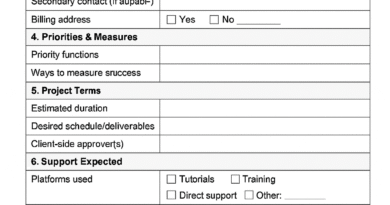Tutorial: Creating a New Image Using JavaScript
Recommandés
In this tutorial, we’ll explore how to create a new image dynamically using JavaScript. We’ll cover both the HTML canvas approach and the DOM manipulation approach.
Prerequisites
Before we begin, make sure you have a basic understanding of HTML, CSS, and JavaScript.
HTML Canvas Approach
Step 1: Set up your HTML file
<!DOCTYPE html>
<html lang="en">
<head>
<meta charset="UTF-8">
<meta name="viewport" content="width=device-width, initial-scale=1.0">
<title>Creating Image with Canvas</title>
</head>
<body>
<canvas id="myCanvas" width="200" height="200"></canvas>
<script src="script.js"></script>
</body>
</html>Step 2: Write JavaScript code
Create a JavaScript file named script.js and add the following code:
// Get the canvas element
var canvas = document.getElementById('myCanvas');
var ctx = canvas.getContext('2d');
// Create a new image object
var img = new Image();
// Set the source of the image
img.src = 'path/to/your/image.jpg'; // Replace 'path/to/your/image.jpg' with your image path
// When the image is loaded, draw it on the canvas
img.onload = function() {
ctx.drawImage(img, 0, 0);
};This code will create a canvas element and draw the image onto it.
DOM Manipulation Approach
Step 1: Set up your HTML file
<!DOCTYPE html>
<html lang="en">
<head>
<meta charset="UTF-8">
<meta name="viewport" content="width=device-width, initial-scale=1.0">
<title>Creating Image with DOM Manipulation</title>
</head>
<body>
<div id="imageContainer"></div>
<script src="script.js"></script>
</body>
</html>Step 2: Write JavaScript code
Create a JavaScript file named script.js and add the following code:
// Create a new image element
var img = document.createElement('img');
// Set the source of the image
img.src = 'path/to/your/image.jpg'; // Replace 'path/to/your/image.jpg' with your image path
// Set any additional attributes if needed
img.setAttribute('width', '200');
img.setAttribute('height', '200');
// Append the image element to the container
document.getElementById('imageContainer').appendChild(img);This code will dynamically create an image element and append it to the specified container.
Let’s consider a special case where we need to dynamically create images from data retrieved from an API and handle errors gracefully.
Special Case: Dynamic Image Creation from API Data
HTML Structure
<!DOCTYPE html>
<html lang="en">
<head>
<meta charset="UTF-8">
<meta name="viewport" content="width=device-width, initial-scale=1.0">
<title>Dynamic Image Creation</title>
</head>
<body>
<div id="imageContainer"></div>
<script src="script.js"></script>
</body>
</html>JavaScript Code (script.js)
// API endpoint for image data
const apiUrl = 'https://api.example.com/images';
// Function to fetch image data from API
async function fetchImageData() {
try {
const response = await fetch(apiUrl);
if (!response.ok) {
throw new Error('Failed to fetch image data');
}
const imageData = await response.json();
return imageData;
} catch (error) {
console.error(error);
return null;
}
}
// Function to create images from data
async function createImages() {
const imageData = await fetchImageData();
if (!imageData) return;
const imageContainer = document.getElementById('imageContainer');
imageData.forEach(image => {
const img = new Image();
img.src = image.url;
img.alt = image.alt;
img.className = 'dynamic-image';
imageContainer.appendChild(img);
});
}
// Call the function to create images
createImages();Explanation
- We have an API endpoint (
apiUrl) from which we retrieve image data. - The
fetchImageData()function is an asynchronous function that fetches image data from the API. It uses thefetchAPI to make a GET request to the specified endpoint. If the request is successful, it returns the image data in JSON format; otherwise, it logs an error to the console and returnsnull. - The
createImages()function is responsible for creating images from the retrieved data. It first callsfetchImageData()to get the image data. If the data retrieval is successful, it iterates through each image data, creates animgelement for each image, sets itssrcattribute to the image URL,altattribute to the alt text, andclassNameattribute for styling purposes, and appends it to theimageContainer. - We call the
createImages()function to initiate the process of fetching image data and creating images.
Special Considerations
- Error Handling: In the
fetchImageData()function, we handle potential errors that may occur during the API request. If the request fails, we log an error to the console and returnnull. This ensures that the application continues to function even if the image data cannot be retrieved. - Asynchronous Operations: Since fetching data from an API is an asynchronous operation, we use
async/awaitsyntax to handle asynchronous code in a more synchronous-like manner. This allows us to wait for the API response before proceeding with image creation. - Graceful Degradation: If the image data cannot be retrieved from the API, the application gracefully handles the error and continues to function without attempting to create images. This ensures a better user experience and prevents the application from crashing due to unexpected errors.
Result
When you run the code, it will fetch image data from the API endpoint and dynamically create images based on the retrieved data. If the image data retrieval fails, it will log an error to the console and gracefully handle the error without disrupting the application flow. This special case demonstrates how to handle asynchronous operations and errors when dynamically creating images from API data using JavaScript.
Let’s consider a use case where you want to dynamically create a photo grid layout with images fetched from an API.
Use Case: Dynamic Photo Grid Layout
HTML Structure
<!DOCTYPE html>
<html lang="en">
<head>
<meta charset="UTF-8">
<meta name="viewport" content="width=device-width, initial-scale=1.0">
<title>Dynamic Photo Grid</title>
<style>
.photo-grid {
display: grid;
grid-template-columns: repeat(auto-fill, minmax(200px, 1fr));
gap: 10px;
}
.photo-item {
width: 100%;
height: auto;
}
</style>
</head>
<body>
<div class="photo-grid" id="photoGrid"></div>
<script src="script.js"></script>
</body>
</html>JavaScript Code (script.js)
// API endpoint for image data
const apiUrl = 'https://api.example.com/photos';
// Function to fetch image data from API
async function fetchPhotos() {
try {
const response = await fetch(apiUrl);
if (!response.ok) {
throw new Error('Failed to fetch photos');
}
const photos = await response.json();
return photos;
} catch (error) {
console.error(error);
return [];
}
}
// Function to create photo grid
async function createPhotoGrid() {
const photoGrid = document.getElementById('photoGrid');
const photos = await fetchPhotos();
photos.forEach(photo => {
const img = document.createElement('img');
img.src = photo.url;
img.alt = photo.title;
img.classList.add('photo-item');
photoGrid.appendChild(img);
});
}
// Call the function to create photo grid
createPhotoGrid();Explanation
- We have an API endpoint (
apiUrl) from which we retrieve photo data. - The CSS styles define a photo grid layout using CSS Grid, with each grid item having a minimum width of 200px and taking up equal space within the grid container.
- The
fetchPhotos()function is an asynchronous function that fetches photo data from the API. It uses thefetchAPI to make a GET request to the specified endpoint. If the request is successful, it returns the photo data in JSON format; otherwise, it logs an error to the console and returns an empty array. - The
createPhotoGrid()function is responsible for creating the photo grid layout with images fetched from the API. It first callsfetchPhotos()to get the photo data. If the data retrieval is successful, it iterates through each photo data, creates animgelement for each photo, sets itssrcattribute to the photo URL,altattribute to the photo title, adds a class for styling purposes, and appends it to thephotoGridcontainer.
Result
When you run the code, it will fetch photo data from the API endpoint and dynamically create a photo grid layout with images based on the retrieved data. Each image will be displayed within a grid item, forming a visually appealing photo grid. This use case demonstrates how to dynamically create a photo grid layout with images fetched from an API using JavaScript.
Conclusion
You’ve learned two different approaches to dynamically create images using JavaScript. Depending on your requirements and preferences, you can choose either the HTML canvas approach or the DOM manipulation approach. Experiment with different images and styles to enhance your web applications. Happy coding!










